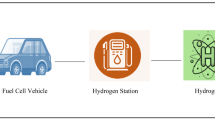Abstract
Because of pollution problems, after the Mayors Summit 2016 takes place, certain European capital cities want to be free from diesel engines automotive equipped with diesel engine by the year 2020. Also, the International Energy Agency affirms that the per cent of bio energy must increase till the year of 2025 and estimates that biofuels can grow to as much as 30% of the world’s road transport fuel mix by 2050. The global share of biofuel in total transport fuel would grow from 2% today to 27% in 2050. According to a European Commission report on the Future Transport Fuels, the 2020 Red target could be supported by vehicles fuelled by fuels based also on animal fats. The objective of the paper is directly related with these worldwide aspects. The paper presents combustion aspects at a diesel engine fuelled by raw animal fats blended in per cent’s of 5% and 10% with diesel fuel. For the same engine adjustments, the preheated raw animal fats use leads to the decrease of in-cylinder pressure with 5% and 12%, depending on animal fats content. Even if the animal fat use provides the increase in the combustion duration with 20 CAD and later achieving per cycle of the mass fraction burned, the heat release rate decreases with 16% (at 5% animal fats) and 20% (at 10% animal fats) assuring the decreasing of the NOx emission level with 22% versus diesel fuel. The smoke opacity decreases with 22% (at 5% of animal fats in blends with diesel fuel) and with 52% at the rise of animal fats content to 10%. The novelty of the paper is assured by aspects like: an efficiently recover of raw animal fats from the leather industry assuring an important decrease of waste stocks and of financial costs, an optimal correlation between animal fats per cent and diesel engine combustion performance. The raw animal fats can be considered a very good alternative biofuel for the diesel engines and can be used for fuelling without major constructive modifications of the engine.












Similar content being viewed by others
References
Future Transport Fuels. Report of the European Expert Group on Future Transport Fuels. ALBA-Fachverlag, Dusseldorf. 2011. Accessed 10 Apr 2018.
Lezsovits F, Könczöl S. Animal-fat investigation and combustion test. J Therm Anal Calorim. 2012;107(1):271–8.
Singh N, Kumar H, Jha MK, Sarma AK. Complete heat balance, performance, and emission evaluation of a CI engine fueled with Mesua ferrea methyl and ethyl ester’s blends with petrodiesel. J Therm Anal Calorim. 2015;122(2):907–16.
Lapuerta M, Fernández JR, Oliva F, Canoira L. Biodiesel from low-grade animal fats: diesel engine performance and emissions. Energy Fuels. 2009;23(1):121–9. https://doi.org/10.1021/ef800481q.
KleinováI A, Vailing J. Vegetable oils and animal fats as alternative fuels for diesel engines with dual fuel operation. Fuel Process Technol. 2011;92(10):1980–6. https://doi.org/10.1016/j.fuproc.2011.05.018.
Sáez AD, Rattá GA, Barrios CC. Prediction of exhaust emission in transient conditions of a diesel engine fueled with animal fat using artificial neural network and symbolic regression. Energy. 2018;149:675–83. https://doi.org/10.1016/j.energy.2018.02.080.
Rajak U, Verma TN. Effect of emission from ethylic biodiesel of edible and non-edible vegetable oil, animal fats, waste oil and alcohol in CI engine. Energy Convers Manag. 2018;166:704–18. https://doi.org/10.1016/j.enconman.2018.04.070.
Hancsók J, Sági D, Valyon J. Diesel fuel blending components from mixture of waste animal fat and light cycle oil from fluid catalytic cracking. J Environ Manag. 2018;223:92–100. https://doi.org/10.1016/j.jenvman.2018.06.011.
Kumar MS, Kerihuel A, Bellettre J, Tazerout M. Ethanol animal fat emulsions as a diesel engine fuel—Part 2: engine test analysis. Fuel. 2006;85(17–18):2646–52. https://doi.org/10.1016/j.fuel.2006.05.023.
Alptekin E, Canakci M, Ozsezen AN, Turkcan A, Sanli H. Using waste animal fat based biodiesels–bioethanol–diesel fuel blends in a DI diesel engine. Fuel. 2015;157:245–54. https://doi.org/10.1016/j.fuel.2015.04.067.
Barrios CC, Sáez AD, Martín C, Álvarez P. Effects of animal fat based biodiesel on a TDI diesel engine performance, combustion characteristics and particle number and size distribution emissions. Fuel. 2014;117(1):618–23. https://doi.org/10.1016/j.fuel.2013.09.037.
Shahir VK, Jawahar CP, Suresh PR, Vinod V. Experimental investigation on performance and emission characteristics of a common rail direct injection engine using animal fat biodiesel blends. Energy Procedia. 2017;117:283–90. https://doi.org/10.1016/j.egypro.2017.05.133.
Behçet R, Oktay H, Çakmak A, Aydin H. Comparison of exhaust emissions of biodiesel–diesel fuel blends produced from animal fats. Renew Sustain Energy Rev. 2015;46:157–65. https://doi.org/10.1016/j.rser.2015.02.015.
Nicolici A, Pana C, Negurescu N, Cernat A, Nutu C (2018) The use of animal fats in the diesel fuelled engine. In: IOP conference series: materials science and engineering, 444, 1–9.
Lazaroiu G, Pană C, Mihaescu L, Cernat A, Negurescu N, Mocanu R, Negreanu G. Solutions for energy recovery of animal waste from leather industry. Energy Convers Manag. 2017;149:1085–95.
Gunstone F. Fatty acid and lipid chemistry. London: Blackie; 1996.
Acknowledgements
The authors address special thanks to AVL GmbH Graz Austria for providing the necessary equipments. This work has been funded by University Politehnica of Bucharest, through the “Excellence Research Grants” Program, UPB—GEX 2017. Identifier: UPB- GEX2017, Ctr. No. TR 27-17-06/2017”. Grant of the Romanian Ministry of Research and Innovation, CCCDI-UEFISCDI, project number PN-III-P1-1.2-PCCDI-2017-0404, within PNCDI III. Sectoral Operational Programme Human Resources Development 2007–2013 of the Ministry of European Funds through the Financial Agreement POSDRU/159/1.5/S/134398.
Author information
Authors and Affiliations
Corresponding author
Additional information
Publisher's Note
Springer Nature remains neutral with regard to jurisdictional claims in published maps and institutional affiliations.
Rights and permissions
About this article
Cite this article
Cernat, A., Pana, C., Negurescu, N. et al. Combustion of preheated raw animal fats-diesel fuel blends at diesel engine. J Therm Anal Calorim 140, 2369–2375 (2020). https://doi.org/10.1007/s10973-019-08972-5
Received:
Accepted:
Published:
Issue Date:
DOI: https://doi.org/10.1007/s10973-019-08972-5




